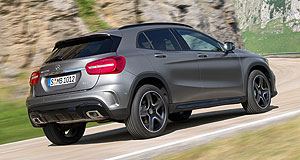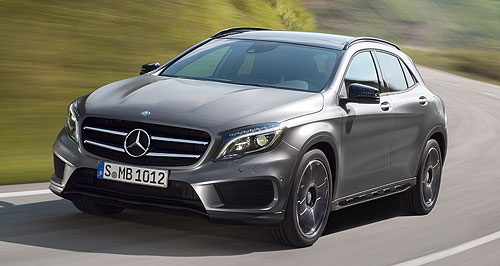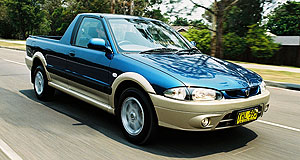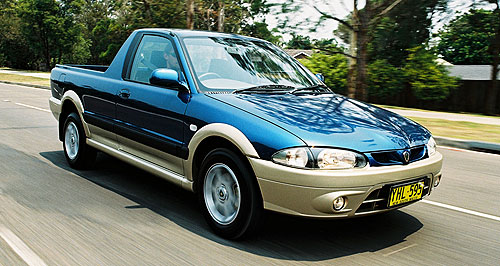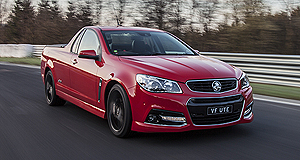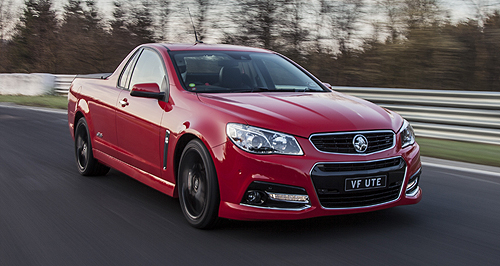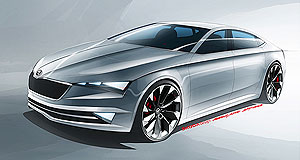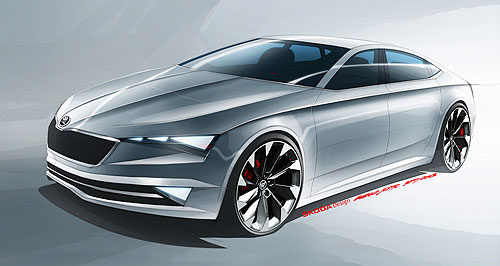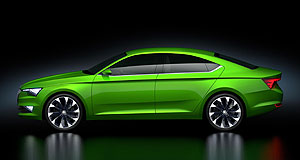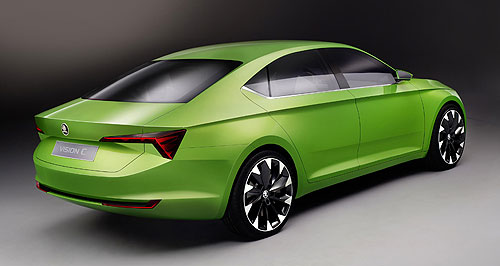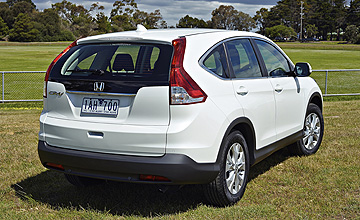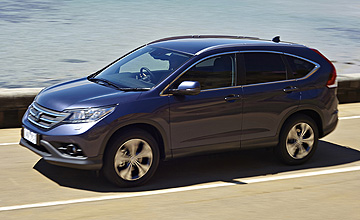Mercedes-Benz C-class (C-class coupe, sedan and wagon )

Make: Mercedes-Benz
Model: C-class coupe, sedan and wagon
Jul / 2007Release date:
Current model
AFTER almost a dozen years of having the old W202 and W203 generation C-class sedan-based CLK Coupe from the late ‘90s, with its bespoke bodywork and E-class pricing, Daimler decided to work the W204-derived ‘CLK’ replacement in with the related W212 E-class bits to create the C207 E-class Coupe (and ragtop).
But with that model kicking off from $100K, Mercedes identified a gaping hole in the $60K segment in which to take on the well-established BMW 3 Series and popular Audi A5 Coupe – hence the C204 C-class Coupe.
It also essentially replaces the Brazilian-built CL203 CLC hatch that was itself based on the previous-generation W203 C-class-derived Sport Coupe offered from 2002 to 2007.
Completely different bodywork from the windscreen backwards means the C204 is indeed substantially new, and features a 450-litre boot augmented by a folding split rear backrest to increase luggage capacity.
Aided by a more acutely angled windscreen than the W204 sedan, the C204 is lower by 41mm and boasts shorter rear overhang, as well as an upswept belt line, narrow C-pillars, elongated roof, and a glasshouse that extend beyond the rear axle.
Initially five models were released – the C180 BlueEfficiency Coupe, C250 BE Coupe, C250 CDI Coupe, C350 BE Coupe, and – from October 2011 – the C63 AMG Coupe - possessing a 336kW/600Nm 6.2-litre naturally aspirated V8 and AMG Speedshift MCT 7-speed sports transmission.
The rest are mated exclusively to Mercedes’ 7G-Tronic automatic transmission driving the rear wheels.
Both four-cylinder petrol vehicles use a 1796cc 1.8-litre turbo-charged direct-injection twin-cam 16-valve BE unit.
The C180 Coupe delivers 115kW of power at 5000rpm and 250Nm of torque at 1600rpm, against the C250’s 150kW at 5500rpm/310Nm at 2300rpm outputs.
Meanwhile the C350 BE packs a 3498cc 3.5-litre V6 channelling 225kW at 6500 and 370Nm at 3500rpm.
Lastly, the sole diesel model leverages Mercedes’ CDI common-rail turbo-diesel tech in the shape of a 2143cc 2.1-litre four-cylinder engine offering 150kW at 4200rpm and 500Nm at 1600rpm.
The C204 is built on the same 2760mm wheelbase as the sedan, but has a length/width and height measurements of 4590/1770/1406mm.
It follows its sedan and wagon cousin in using speed-sensitive hydraulic rack-and-pinion steering, as well as a three-link MacPherson front and multi-link independent rear suspension.
The ride can be lowered via a sports suspension option comprising firmer and 15mm shorter springs, stiffer shock absorbers and beefier anti-roll bars.
MERCEDES-BENZ released its fourth-generation C-class in Australia in July 2007.
Larger, longer, wider and significantly more spacious than before, the W204-series C-class was all new, with crisper styling that borrowed heavily from the contemporary S-class sedan launched early in 2006.
Initially there was a choice of supercharged petrol, or turbo-charged diesel, four-cylinder engines, as well as a naturally aspirated V6 petrol unit.
BMW’s evergreen 3 Series’ enviable reputation for being a driver’s car has helped prompt Mercedes in making the C-class sportier.
On the suspension front, all C-class models adopted adaptive damper control, as part of the three-link MacPherson strut front and multi-link rear axle design.
Dubbed ‘Agility Control Suspension,’ it could automatically soften or firm up the damper pressure according to how the vehicle was driven. Quicker-ratio steering was also implemented.
The S-class also lent its ‘Adaptive Brake’ technology to Mercedes’ smallest sedan for the first time, bringing benefits such as a hill-start assist and a gentle wiping of the brake discs to increase their effectiveness in damp conditions.
Engine outputs also increased markedly. The smallest was a variation of the supercharged 1.8-litre twin-cam four-cylinder unit found in the outgoing vehicle and initially, the C200K replaced the W203 C180K. Its 1796cc engine produced 135kW of power at 5500rpm and 250Nm of torque from 2800rpm.
The W204 C220 CDI used a 2148cc 2.2-litre turbo-diesel engine to generate 125kW at 3800rpm (up from 110kW) and 400Nm from 2000rpm (up from 340Nm).
Both engines offered a five-speed automatic with a sequential shift function. The C200K was also available with a six-speed manual.
For maximum power, the C280 employed a 2996cc 3.0-litre V6 delivering 170kW at 6000rpm and 300Nm from between 2500 and 5000rpm, exclusively mated to Mercedes’ 7GTronic seven-speed automatic gearbox.
In addition to a body structure employing high-strength steel that had been subject to 100 crash tests, safety features included eight airbags (dual front, front side, rear side and curtain), a preventative occupant protection system that could ‘recognise’ critical driving manoeuvres at an early stage by priming the vehicles safety systems – such as the electronic stability control and brake assist function – for a possible collision.
While the outgoing W203 cabin was criticised for lagging behind in quality feel and execution, the W204’s interior was the outcome of a complete overhaul, with softer and more expensive-feeling materials.
Other new-to-C-class measures included infotainment units called Audio 20 and COMAND APS – bringing a keypad telephone feature and Bluetooth connectivity. The latter, which was optional, also included a satellite navigation system four gigabyte memory music server, DVD video and audio, and Linguatronic voice-activation control.
In late 2007 Mercedes-Benz signalled how serious it was about diesel engines by importing the C320 CDI as its range-topping C-class model, at least until the C63 AMG arrived early in 2008.
The 3.0-litre V6 turbo-diesel used 7.6L/100km of fuel during city and highway driving and pumped out 165kW and a hefty 510Nm of torque.
It came with the same high level of specification as the C280 V6 petrol, but added three-zone climate-control.
In March 2008, what some described as the wildest production Mercedes-Benz ever built reached Australia, in the form of the C63 AMG.
The AMG-fettled C-class sedan was significantly cheaper than its most direct rivals in BMW's M3 coupe Audi's RS4 sedan.
With 336kW of power and 600Nm of torque available, via a seven-speed automatic transmission, from its 6.2-litre naturally-aspirated V8, the C63 also sprinted to 100km/h in a claimed 4.5 seconds - out-pacing both the M3 and the RS4.
In May 2008 an Estate model was introduced to faces the BMW 3-Series Touring and Audi's A4 Avant.
Three engine alternatives were offered to Estate customers: the 1.8-litre supercharged petrol four-cylinder C 200 Kompressor, the 2.1-litre C 220 CDI turbo-diesel four-cylinder, and the 6.2-litre petrol V8 C 63 AMG.
March 2010 saw an update to the C-class range, replacing ‘Kompressor’ supercharging with more efficient turbo power on a new CGI direct-injection petrol engine.
Providing improved economy and emissions, this 1.8-litre turbo unit was initially available in two states of tune – delivering 135kW of power and 270Nm of torque in the C200 CGI models and 150kW/310Nm for the C250 CGI newcomer. Gearbox choices continued as six-speed manual or a no-cost five-speed automatic option.
Compared with the outgoing 135kW/250Nm C200 Kompressor, there was a 0.7 litre per 100km improvement in fuel consumption while carbon dioxide emissions fell to the tune of 18 grams per kilometre in the C200 CGI auto sedan. The C250 CGI, returned 7.7L/100km and 180g/km and for the first time, represented a direct rival for BMW’s 323i and 325i.
All other models retained the same mechanicals although the entire range gained significant specification increases at no extra cost.
The C200 CGI and C220 CDI got some Avantgarde trim pieces as standard, including the ‘Three Pointed Star’ grille that was previously the domain of the sports luxury grade models, as well as 17-inch five-spoke alloy wheels.
Along with the addition of split folding rear seats and a new dual cupholder recess, they tallied up to more than $2500 worth of value-added extras on the sedan. C-class buyers wishing for the more traditional Mercedes grille had to specify the Elegance package.
The C250 CGI cars built on these items with the fitment of Mercedes’ COMAND entertainment and navigation system, 18-inch alloys and the full Avantgarde model line features and trims.
V6 models gained even more value thanks to the inclusion of the company’s Vision Package (high-intensity discharge Bi-Xenon headlights with Intelligent Light System), Harmon-Kardon 450kW audio upgrade, and sunroof, while the C63 AMG added a reversing camera and double cupholders.
But with that model kicking off from $100K, Mercedes identified a gaping hole in the $60K segment in which to take on the well-established BMW 3 Series and popular Audi A5 Coupe – hence the C204 C-class Coupe.
It also essentially replaces the Brazilian-built CL203 CLC hatch that was itself based on the previous-generation W203 C-class-derived Sport Coupe offered from 2002 to 2007.
Completely different bodywork from the windscreen backwards means the C204 is indeed substantially new, and features a 450-litre boot augmented by a folding split rear backrest to increase luggage capacity.
Aided by a more acutely angled windscreen than the W204 sedan, the C204 is lower by 41mm and boasts shorter rear overhang, as well as an upswept belt line, narrow C-pillars, elongated roof, and a glasshouse that extend beyond the rear axle.
Initially five models were released – the C180 BlueEfficiency Coupe, C250 BE Coupe, C250 CDI Coupe, C350 BE Coupe, and – from October 2011 – the C63 AMG Coupe - possessing a 336kW/600Nm 6.2-litre naturally aspirated V8 and AMG Speedshift MCT 7-speed sports transmission.
The rest are mated exclusively to Mercedes’ 7G-Tronic automatic transmission driving the rear wheels.
Both four-cylinder petrol vehicles use a 1796cc 1.8-litre turbo-charged direct-injection twin-cam 16-valve BE unit.
The C180 Coupe delivers 115kW of power at 5000rpm and 250Nm of torque at 1600rpm, against the C250’s 150kW at 5500rpm/310Nm at 2300rpm outputs.
Meanwhile the C350 BE packs a 3498cc 3.5-litre V6 channelling 225kW at 6500 and 370Nm at 3500rpm.
Lastly, the sole diesel model leverages Mercedes’ CDI common-rail turbo-diesel tech in the shape of a 2143cc 2.1-litre four-cylinder engine offering 150kW at 4200rpm and 500Nm at 1600rpm.
The C204 is built on the same 2760mm wheelbase as the sedan, but has a length/width and height measurements of 4590/1770/1406mm.
It follows its sedan and wagon cousin in using speed-sensitive hydraulic rack-and-pinion steering, as well as a three-link MacPherson front and multi-link independent rear suspension.
The ride can be lowered via a sports suspension option comprising firmer and 15mm shorter springs, stiffer shock absorbers and beefier anti-roll bars.
MERCEDES-BENZ released its fourth-generation C-class in Australia in July 2007.
Larger, longer, wider and significantly more spacious than before, the W204-series C-class was all new, with crisper styling that borrowed heavily from the contemporary S-class sedan launched early in 2006.
Initially there was a choice of supercharged petrol, or turbo-charged diesel, four-cylinder engines, as well as a naturally aspirated V6 petrol unit.
BMW’s evergreen 3 Series’ enviable reputation for being a driver’s car has helped prompt Mercedes in making the C-class sportier.
On the suspension front, all C-class models adopted adaptive damper control, as part of the three-link MacPherson strut front and multi-link rear axle design.
Dubbed ‘Agility Control Suspension,’ it could automatically soften or firm up the damper pressure according to how the vehicle was driven. Quicker-ratio steering was also implemented.
The S-class also lent its ‘Adaptive Brake’ technology to Mercedes’ smallest sedan for the first time, bringing benefits such as a hill-start assist and a gentle wiping of the brake discs to increase their effectiveness in damp conditions.
Engine outputs also increased markedly. The smallest was a variation of the supercharged 1.8-litre twin-cam four-cylinder unit found in the outgoing vehicle and initially, the C200K replaced the W203 C180K. Its 1796cc engine produced 135kW of power at 5500rpm and 250Nm of torque from 2800rpm.
The W204 C220 CDI used a 2148cc 2.2-litre turbo-diesel engine to generate 125kW at 3800rpm (up from 110kW) and 400Nm from 2000rpm (up from 340Nm).
Both engines offered a five-speed automatic with a sequential shift function. The C200K was also available with a six-speed manual.
For maximum power, the C280 employed a 2996cc 3.0-litre V6 delivering 170kW at 6000rpm and 300Nm from between 2500 and 5000rpm, exclusively mated to Mercedes’ 7GTronic seven-speed automatic gearbox.
In addition to a body structure employing high-strength steel that had been subject to 100 crash tests, safety features included eight airbags (dual front, front side, rear side and curtain), a preventative occupant protection system that could ‘recognise’ critical driving manoeuvres at an early stage by priming the vehicles safety systems – such as the electronic stability control and brake assist function – for a possible collision.
While the outgoing W203 cabin was criticised for lagging behind in quality feel and execution, the W204’s interior was the outcome of a complete overhaul, with softer and more expensive-feeling materials.
Other new-to-C-class measures included infotainment units called Audio 20 and COMAND APS – bringing a keypad telephone feature and Bluetooth connectivity. The latter, which was optional, also included a satellite navigation system four gigabyte memory music server, DVD video and audio, and Linguatronic voice-activation control.
In late 2007 Mercedes-Benz signalled how serious it was about diesel engines by importing the C320 CDI as its range-topping C-class model, at least until the C63 AMG arrived early in 2008.
The 3.0-litre V6 turbo-diesel used 7.6L/100km of fuel during city and highway driving and pumped out 165kW and a hefty 510Nm of torque.
It came with the same high level of specification as the C280 V6 petrol, but added three-zone climate-control.
In March 2008, what some described as the wildest production Mercedes-Benz ever built reached Australia, in the form of the C63 AMG.
The AMG-fettled C-class sedan was significantly cheaper than its most direct rivals in BMW's M3 coupe Audi's RS4 sedan.
With 336kW of power and 600Nm of torque available, via a seven-speed automatic transmission, from its 6.2-litre naturally-aspirated V8, the C63 also sprinted to 100km/h in a claimed 4.5 seconds - out-pacing both the M3 and the RS4.
In May 2008 an Estate model was introduced to faces the BMW 3-Series Touring and Audi's A4 Avant.
Three engine alternatives were offered to Estate customers: the 1.8-litre supercharged petrol four-cylinder C 200 Kompressor, the 2.1-litre C 220 CDI turbo-diesel four-cylinder, and the 6.2-litre petrol V8 C 63 AMG.
March 2010 saw an update to the C-class range, replacing ‘Kompressor’ supercharging with more efficient turbo power on a new CGI direct-injection petrol engine.
Providing improved economy and emissions, this 1.8-litre turbo unit was initially available in two states of tune – delivering 135kW of power and 270Nm of torque in the C200 CGI models and 150kW/310Nm for the C250 CGI newcomer. Gearbox choices continued as six-speed manual or a no-cost five-speed automatic option.
Compared with the outgoing 135kW/250Nm C200 Kompressor, there was a 0.7 litre per 100km improvement in fuel consumption while carbon dioxide emissions fell to the tune of 18 grams per kilometre in the C200 CGI auto sedan. The C250 CGI, returned 7.7L/100km and 180g/km and for the first time, represented a direct rival for BMW’s 323i and 325i.
All other models retained the same mechanicals although the entire range gained significant specification increases at no extra cost.
The C200 CGI and C220 CDI got some Avantgarde trim pieces as standard, including the ‘Three Pointed Star’ grille that was previously the domain of the sports luxury grade models, as well as 17-inch five-spoke alloy wheels.
Along with the addition of split folding rear seats and a new dual cupholder recess, they tallied up to more than $2500 worth of value-added extras on the sedan. C-class buyers wishing for the more traditional Mercedes grille had to specify the Elegance package.
The C250 CGI cars built on these items with the fitment of Mercedes’ COMAND entertainment and navigation system, 18-inch alloys and the full Avantgarde model line features and trims.
V6 models gained even more value thanks to the inclusion of the company’s Vision Package (high-intensity discharge Bi-Xenon headlights with Intelligent Light System), Harmon-Kardon 450kW audio upgrade, and sunroof, while the C63 AMG added a reversing camera and double cupholders.
